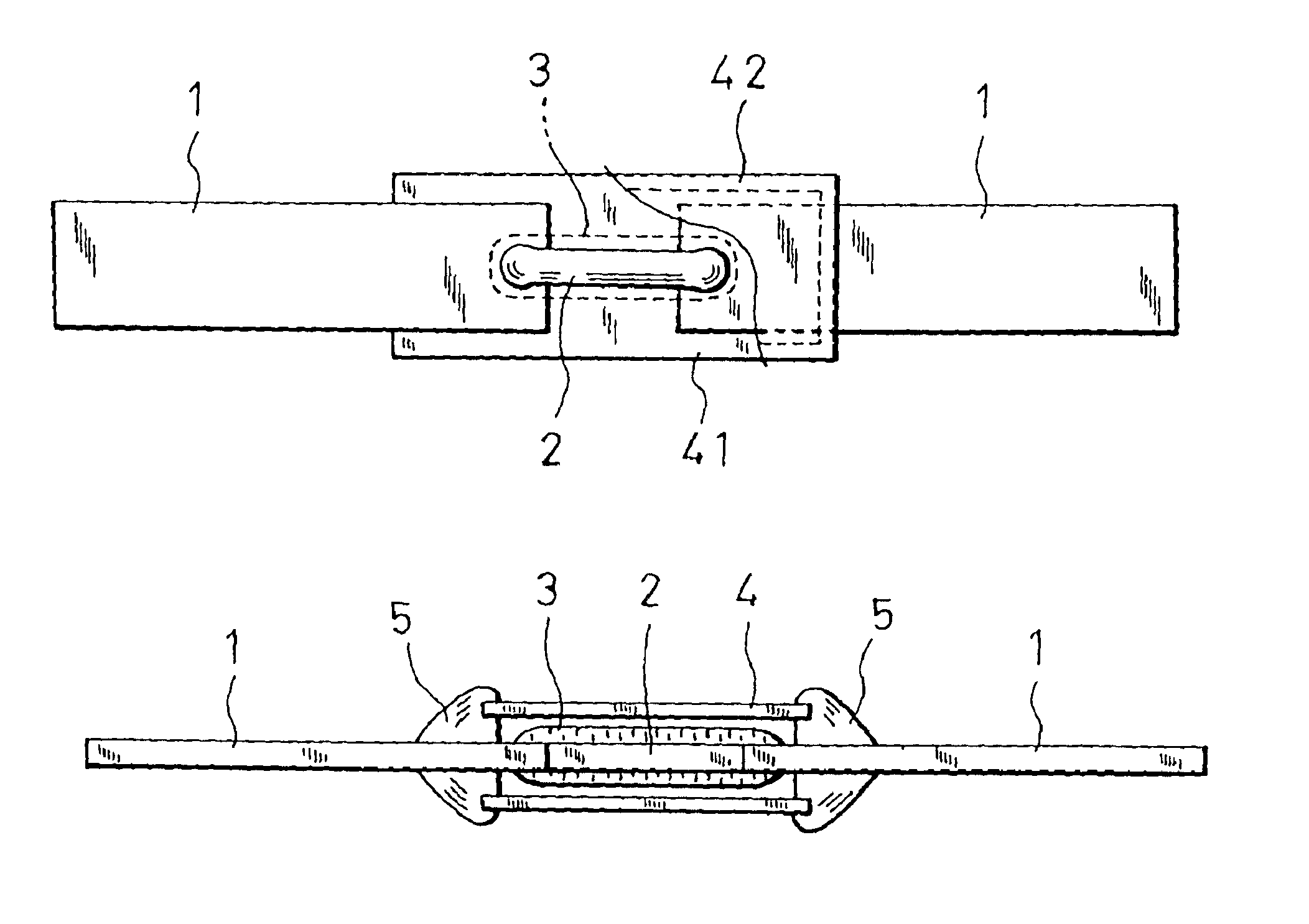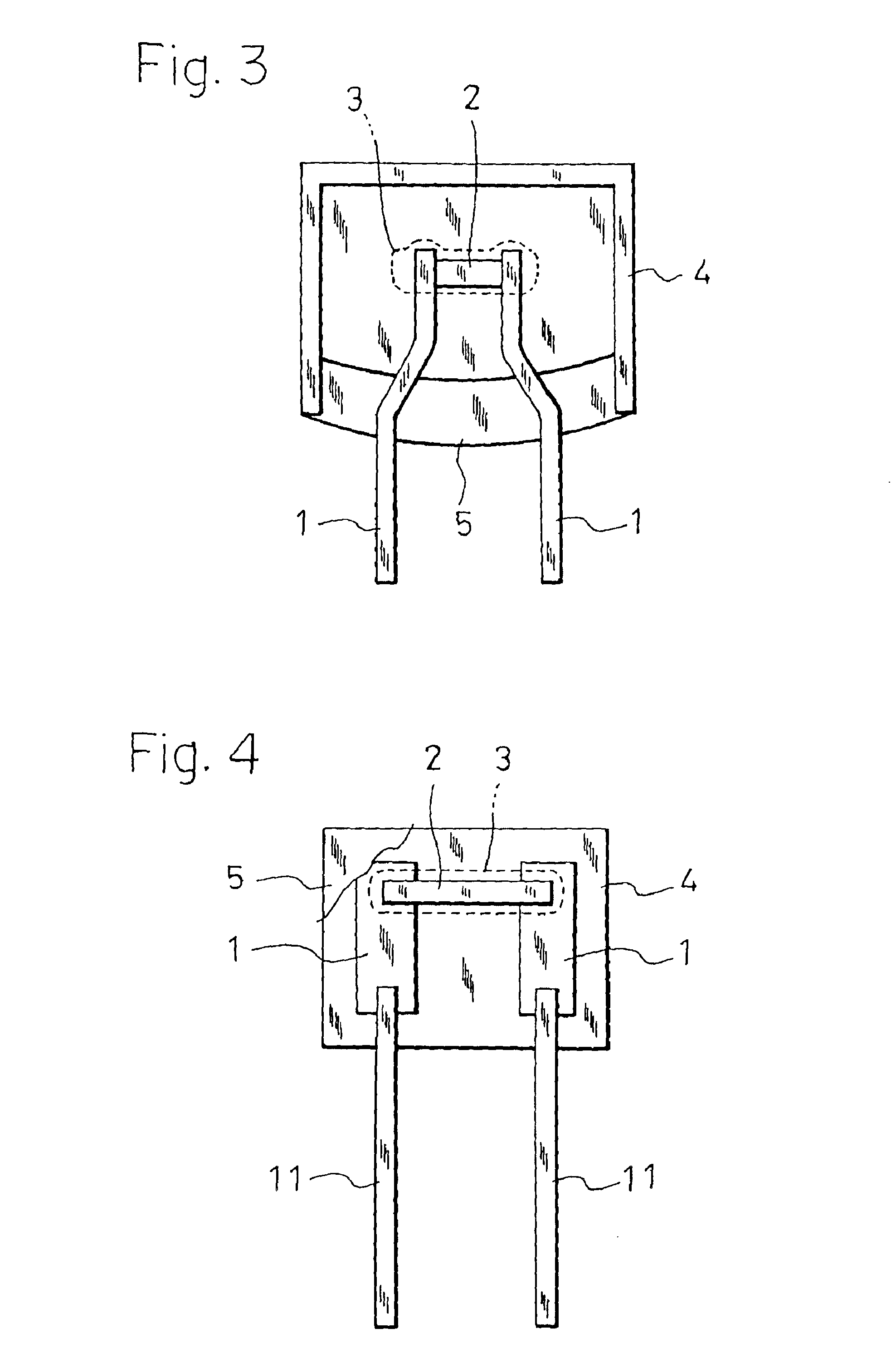Alloy type thermal fuse and fuse element thereof
a technology of alloy type thermal fuse and fuse element, which is applied in the direction of thermally actuated switches, heating/cooling contact switches, emergency protective devices, etc., can solve the problems of unable to meet the requirements of environmental protection, the process of drawing the alloy into such a very thin wire is hardly performed, and the operation failure of the fuse element due to self-heating inevitably occurs
- Summary
- Abstract
- Description
- Claims
- Application Information
AI Technical Summary
Benefits of technology
Problems solved by technology
Method used
Image
Examples
example
(5)
A base material of an alloy composition of 38.6% In, 13.5% Sn, 44.5% Bi, 2.7% Ag, and 0.7% Cu was drawn into a wire of 300 .mu.m.phi. in diameter. The draw-down ratio per dice was 6.5%, and the drawing speed was 45 m / min. In the wire, no breakage occurred. The specific resistance of the wire was measured. As a result, the specific resistance was 38 .mu..OMEGA..multidot.cm.
The wire was cut into pieces of 4 mm, and substrate type thermal fuses were produced with using the pieces as fuse elements in the same manner as Example (1).
The operating temperatures of the resulting specimens were measured. The resulting operating temperatures were within a range of 70.degree. C..+-.1.degree. C. It was confirmed that, under the usual rated current, no influence of self-heating is made. Furthermore, a change in resistance of the fuse element which was caused by the heat cycles, and which may become a serious problem was not observed.
It was confirmed that, in a range of 100 weight parts of a co...
PUM
| Property | Measurement | Unit |
|---|---|---|
| operating temperature | aaaaa | aaaaa |
| operating temperature | aaaaa | aaaaa |
| temperature | aaaaa | aaaaa |
Abstract
Description
Claims
Application Information
 Login to View More
Login to View More - R&D
- Intellectual Property
- Life Sciences
- Materials
- Tech Scout
- Unparalleled Data Quality
- Higher Quality Content
- 60% Fewer Hallucinations
Browse by: Latest US Patents, China's latest patents, Technical Efficacy Thesaurus, Application Domain, Technology Topic, Popular Technical Reports.
© 2025 PatSnap. All rights reserved.Legal|Privacy policy|Modern Slavery Act Transparency Statement|Sitemap|About US| Contact US: help@patsnap.com



